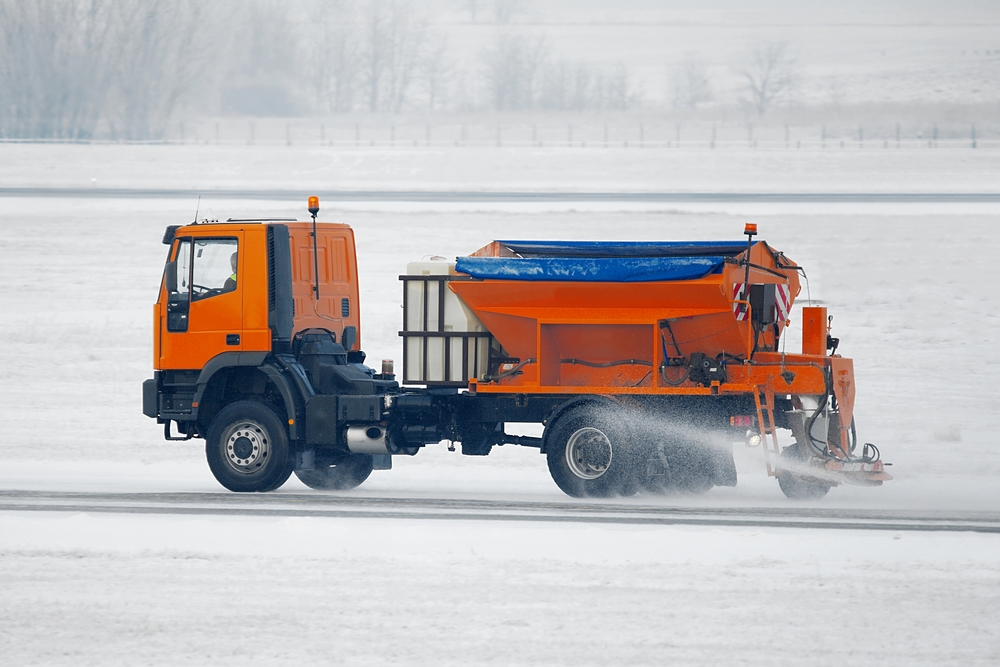Is the Northeast Running Out of Road Salt?

The salt of the Earth comes from a number of commercial sources, from the parched deserts of Chile to the green shores of Ireland. Few people, however, worry about salt's provenance, since the mineral is usually in plentiful supply.
But that changed this week, as the northeastern United States got walloped with another heavy winter snowfall, and stocks of road salt hit dangerously low levels. Wednesday (Feb. 5), New York Gov. Andrew Cuomo declared a state of emergency, citing a regional shortage of road salt.
"This is not anything we didn't expect," Cuomo said, as quoted in a New York Daily News article. "We did have notice of this storm. The shortage of salt is a complicating factor." [Photos: Hike the Strataca Salt Safari]
Salt — as fundamental to human civilization as fire or the wheel — has myriad uses, from food preservation and medical saline solutions to manufacturing processes and the frost on the rims of margarita glasses.
But what makes salt so useful for deicing roadways is one physical property that becomes evident when salt interacts with water: Salt lowers the freezing temperature of water, which normally turns to ice when the temperature drops to 32 degrees Fahrenheit (0 degrees Celsius).
Water that contains 10 percent salt won't, however, freeze at that temperature; it freezes at 20 degrees F (minus 6 degrees C). Add a little more salt — say, a 20 percent salt solution — and the freezing point drops even further, to 2 degrees F (minus 16 degrees C).
Even with this property, there's a limit to how effective salt is at deicing roads: When the temperature of the roadway is 15 degrees F (minus 9 C) or lower, the solid salt can't interact with ice. In these cases, road crews sometimes mix sand (for traction) or other chemicals such as magnesium chloride or calcium chloride, which can work at much lower temperatures.
Sign up for the Live Science daily newsletter now
Get the world’s most fascinating discoveries delivered straight to your inbox.
Only a small amount of the world's salt supplies — roughly 8 percent — is used for road deicing. Almost 70 percent is used for industrial processes, and the rest is used for agriculture, water treatment and food preparation. Nonetheless, road deicing consumes about 22 million tons of salt each year in the United States.
According to the Salt Institute, an industry trade association, deicing roads with salt reduces accidents by 88 percent and injuries by 85 percent. When snow and ice prevent road travel, it can cost state economies as much as $700 million a day, according to the institute.
Hold the salt, please
But the use of salt on road surfaces isn't universally welcomed: Environmentalists have increasingly called for states and municipalities to hold the salt, due to the compound's ecological impact.
"Salt is a natural ingredient, but what is not natural is the concentrations," Richard Hanneman, president of the Salt Institute, told Discovery News.
As winter turns to spring, and salt is washed off roadways and into creeks and ponds, it can kill young plants and small aquatic organisms, primarily due to the chloride ions in salt (sodium chloride, or NaCl).
Additionally, salty water has a higher density and settles at the deepest parts of ponds and lakes. This stratification prevents the dissolved oxygen in the upper layers of the water from reaching the bottom layers, and keeps nutrients within the bottom layers from reaching the top layers. Thus, the bottom layers of ponds and lakes can become oxygen-starved and unable to support life.
As more water bodies are found to be salt-impacted, officials are looking for smarter ways to use less salt (or other inexpensive compounds) to deice roads.
"Anti-icing," for example, involves spraying salt solutions onto road surfaces before a storm. This "non-stick surface" prevents the ice from freezing in the first place, Discovery News reports.
Computerized "smart plows" can track storm conditions, pavement temperatures and other factors to apply only as much salt as is needed to keep roads clear. When Indiana implemented this strategy last winter, it saved 228,000 tons of salt and more than $13 million in costs, according to a state report.
Follow Marc Lallanilla on Twitter and Google+. Follow us @livescience, Facebook & Google+. Original article on Live Science.










